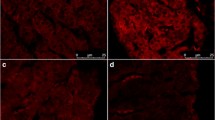Summary
In order to know the practical value of heat stress protein 70 (HSP70) and to know the changes of plasma free amino acids of workers with the induction of HSP70 by harmful factors, the amino acid composition of major HSP, HSP70 purified from the heated cultured human leukemia cancer cell line K562, rabbit liver, rat liver and heart, and mouse liver with two-step procedures of DE52-cellulose ion exchange chromatography and affinity chromatography on ATP-agarose was examined. The level of plasma free amino acids of workers with long-term exposure to heat, carbon monoxide and the combined effect of both heat and carbon monoxide was also investigated. The results showed that the three richest amino acids in HSP70 of all origins were Gly, Glu and Asp, except that of rat heart which was rich in Gly, Phe and Glu. Additionally, Lys, Val, Leu and Ala were also found very rich in HSP70 of all origins. Compared with controls, the most of plasma free amino acids tended to increase and free methionine and tryptophan were increased significantly (P<0. 05) after a long-term exposure to heat, carbon monoxide, and both. These findings suggested that further studies need to be done to find the substances or drugs which induce the synthesis of HSP70 and reduce the inhibition of synthesis of normal proteins for the purpose of protecting people with exposure to harmful factors against the damage of the factors.
Similar content being viewed by others
References
Lindquist S. The heat shock response. Annu Rev Biochem, 1986, 55:1151
Lindquist S, Craig E A. The heat shock proteins. Annu Rev Genet, 1988, 22:631
Wu T C, Tanguaay R M, He H Zet al. Presence of antibodies to heat stress proteins and its possible significance in workers exposed to high temperature and carbon monoxide. Biomed Environ Sci, 1996, 9:370
Craig E A. The heat shock response. Crit Rev Biochem, 1985, 18:239
Laszlo A. Evidence for two states of thermotolerance in mammalian cells. Int J Hyperthermia, 1988, 4:513
Mosser D D, Bols N C. Relationship between heat shock protein synthesis and thermotolerance in rainbow trout fibroblast. J Com Physiol, 1988, 158:457
Geting M J. Protein folding in the cell. Nature, 1992, 355:33
Welch W J, Feramisco J R. Purification of the major mammalian heat shock proteins. J Biol Chem, 1982, 257:14949
Welch W J, Feramisco J R. Rapid purification of mammalian 70 000 -Dalton stress proteins: Affinity of the proteins for nucleotides. Mol Cell Biol, 1985, 5: 1229
Ingolia T D, Craig E A, McCarthy B J. Sequence of three copies of the gene for major Drosophila heat shock induced protein and their flanking regions. Cell, 1980, 21:669
Angelidis C E, Lazaridis I, Pagoulatos G N. Constitutive expression of heat shock protein 70 in mammalian cells confers thermoresistance. Eur J Biochem, 1991, 199:35
Li G C, Li L Y, Liu K et al. Thermal response of rat fibroblasts stably transfected with the human 70 kDa heat shock protein-encoding gene. Proc Natl Acad Sci. USA, 1991, 88:1681
Riabowol K T, Mizzen L A, Welch W J. Heat shock is fibroblasts microinjected with antibodies against HSP70. Science, 1988, 242:433
Hotchkiss R, Nunnally I, Lindquist S et al. Hyperthermia protects mice against the lethal effect of endotoxin. Am J Physi, 1993, 265:R1447
Currie R W, Tanguay R M, Kingma Jr J G. Heat shock response and limitation of tissue necrosis during occusion/reperfusion in rabbit hearts. Circulation, 1993, 87:963
Author information
Authors and Affiliations
Additional information
This project was supported by the grants from National Natural Science Foundation of China (No. 38850662) and the Research Fund of Ministry of Health, China (No. 0688-203).
Rights and permissions
About this article
Cite this article
Tangchun, W., Yang, W., Ye, Y. et al. Study on amino acid composition of HSP70 and the level of plasma free amino acids of workers with long-term exposure to harmful factors. Current Medical Science 18, 204–207 (1998). https://doi.org/10.1007/BF02886473
Received:
Published:
Issue Date:
DOI: https://doi.org/10.1007/BF02886473




